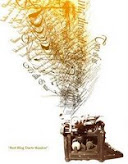 Today I went to the Smithsonian National Museum of Natural History. When I saw what was in the lobby I was excited because I don’t remember ever having seen one in real life before. It was one of the statues that once guarded Easter Island. I decided that for something I’ve seen so often on TV and in pictures, I didn’t know nearly enough about these statues. So the moai of Easter Island are the topic of today’s post.
Today I went to the Smithsonian National Museum of Natural History. When I saw what was in the lobby I was excited because I don’t remember ever having seen one in real life before. It was one of the statues that once guarded Easter Island. I decided that for something I’ve seen so often on TV and in pictures, I didn’t know nearly enough about these statues. So the moai of Easter Island are the topic of today’s post.Easter Island is a small island near Chile in South America
 (see the map to the right). It was formed by a volcanic eruption and the packed volcanic ash, called tuff, became the main material used by the island’s people to sculpt moai. The sculptures, built with extra-large (and long) heads and short bodies with no legs, represent ancestors of the islanders. The moai may have been built by professional sculptors or members of the various tribes of people on the island may have created sculptures of their own ancestors. Either way, the moai look very much alike.
(see the map to the right). It was formed by a volcanic eruption and the packed volcanic ash, called tuff, became the main material used by the island’s people to sculpt moai. The sculptures, built with extra-large (and long) heads and short bodies with no legs, represent ancestors of the islanders. The moai may have been built by professional sculptors or members of the various tribes of people on the island may have created sculptures of their own ancestors. Either way, the moai look very much alike.Hundreds of moai were sculpted during the 700 years between the year 1000 and 1700. At one point there were nearly 300 lining the edge of the island and about 600 more in the process of being carved or displayed throughout the island.
The statues were created at sites toward the center of the island and then moved to the coastline where they were hoisted onto stone platforms. Moai completely ringed the outer edge of the island so they could be seen by anyone approaching Easter Island from any direction.
The moai varied in size, the largest standing 33 feet tall. The statue at the National Museum of Natural History was only slightly taller than I am: about 6 feet. Some archaeologists believe that the statues were taken down periodically as larger statues were built to replace them. The people of Easter Island may have thought that spiritual or magical power entered the statues; building the moai may have been a religious practice.
At some point between 1722 and 1825 nearly all the moai were knocked over. Scientists don’t know why, but they believe the moai were toppled by the people of Easter Island. Today, only about 50 of the statues still stand. Some are in museums and some remain on the island, though they are no longer believed to hold spiritual power.







No comments:
Post a Comment